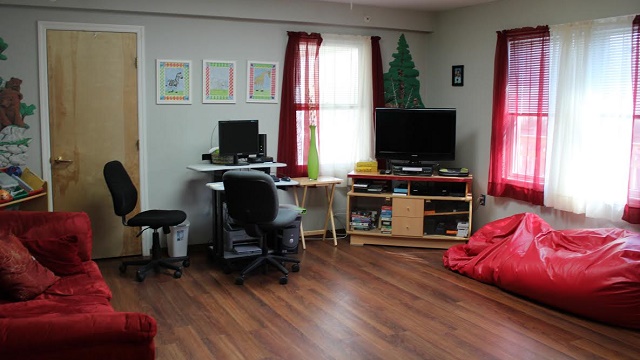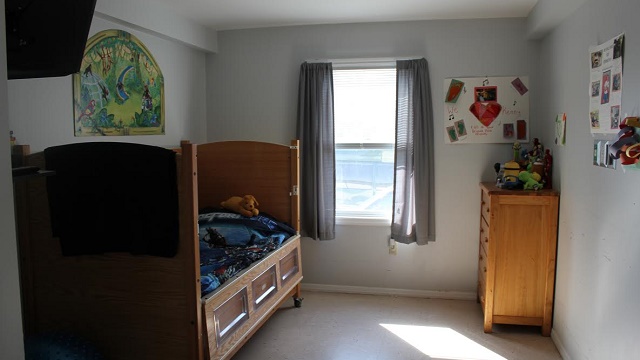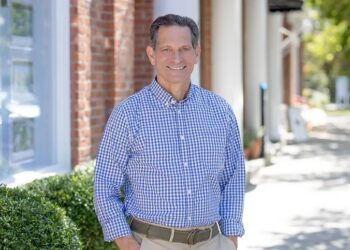It is a generally accepted fact that the East End communities of Long Island lack sufficient affordable housing. Private sector and government efforts have not been able to solve the problem. A less recognized need is housing for children and adults with disabilities. I met with Stephen Friedman, President and CEO of United Cerebral Palsy (UCP) of Suffolk County, at one of the houses they own in Central Islip. I asked him to provide some perspective regarding the need for this type of housing. “The New York State Office of Persons with Development Disabilities (OPWDD) which provides 100% of the funds our residential program with federal and state matching funds, estimates that there are thousands of individuals throughout the state looking for residences,” said Friedman. “UCP of Suffolk owns and operates 31 homes including two children’s residences in 18 Suffolk County communities.” The organization was founded in the 1950s. “We house over 200 residents, including children, with one staff person for each resident. We also manage an accessible apartment complex consisting of three homes in Central Islip for 21 individuals who live independently,” he added. “Our homes range from four bedrooms to a 31 bedroom unit but we find the six bedroom units, such as the one we are in now, to be the most conducive to comfortable living.”
When purchasing a home, UCP of Suffolk has set guidelines that they must follow. “We do purchase the homes on the open market exclusively with the money provided by the state,” he explained. “We’re required to comply with the Padavan law which was passed by the legislature regarding group housing to avoid either institutional housing or campus setting which segregates the residents from the community.” (Author’s Note: The Padavan Law regarding group housing, named after State Senator Frank Padavan, was passed by the State Legislature in 1978.)
 |
|
Inside one of the homes. (Courtesy Photo) |
Finding the right property can be a lengthy process. They start with “an exhausted search” for potential locations. “We have a set of standards,” noted Mr. Friedman. “One, we are looking for a ranch. We’re looking for a topography that is as flat as possible, which is a real challenge on Long Island.” They prefer a fixer upper. “We look for a house that is in middle to poor condition, because we are going to rip it apart anyway to make it accessible and meet design needs, so why pay more?” he asked. “We look for a large piece of property so we can expand. While most houses are four bedroom maximum, we need six. To meet the needs of our residents we need large kitchens and hallways as well as to be able to construct ramps.”
Considering the special needs that the organization has to address, and the budget limitations imposed by the state, they have a pretty set ratio when it comes to cost for acquisition and how much for renovation. “It generally works out 1/3 acquisition and 2/3 renovation,” he said.
They typically finance the purchases with a mortgage. “Usually with a fifteen year mortgage from a lending institution,” he noted. “We are as susceptible to the mortgage market as any other borrower.”
 |
|
It is a generally accepted fact that the East End communities of Long Island lack sufficient affordable housing. (Courtesy Photo) |
When asked about the community’s attitude towards housing for the handicapped, Mr. Friedman said he experiences both ends of the spectrum. “We renovated a house for a married couple, each with their own bathroom and bedroom. On the tenth anniversary of their living there, we did a party at the house,” he explained. “Both of their families came, a lot of management and our workers came with their families, and the neighbors came and brought gifts and food. On the other hand, we had one neighbor, whenever our wide vans would knock over her mail box which we promptly replaced, she complained, so we offered to move her mail box.” She was not open to the olive branch. “She said no! Her mail box was staying there and we should move,” he added. “But for the most part, once the neighbors see how we fix up homes in their neighborhoods and manage our properties, we don’t have any problems with the community.”
To learn more about the organization’s funding, we caught up with Nancy Rao, who was recently appointed Director of Development and Public Relations. “UCP of Suffolk is a 501 C 3 not-for-profit service organization,” she explained. “We provide services for 3,500 children and adults with a variety of disabilities.” To support daily operations, UCP of Suffolk hosts several benefits throughout the year. “The fundraising events we sponsor includes two golf outings, Casino Night for which we have a gaming company come in, have a Gala Night which is a dinner dance, a walkathon at Belmont Lake State Park. Currently we raise about $800,000 a year from these events and this year our goal is to raise $1 million,” she noted. “We are also building a major gift program. We work with companies on Eastern Long Island, such as Tanger Outlets and Walgreen’s, to provide employment for people with disabilities.” Soon they’ll be able to transport those without a car to their job. “We received a grant to fund a mobile vehicle to bring employment services to individuals in Suffolk County who do not have transportation,” she noted. “We also have art shows out on the East End and always looking for opportunities at the wineries and any other way we can establish a presence there,” Mr. Friedman added.
For more information about UCP of Suffolk, visit www.ucp-suffolk.org.






